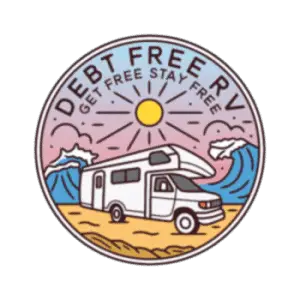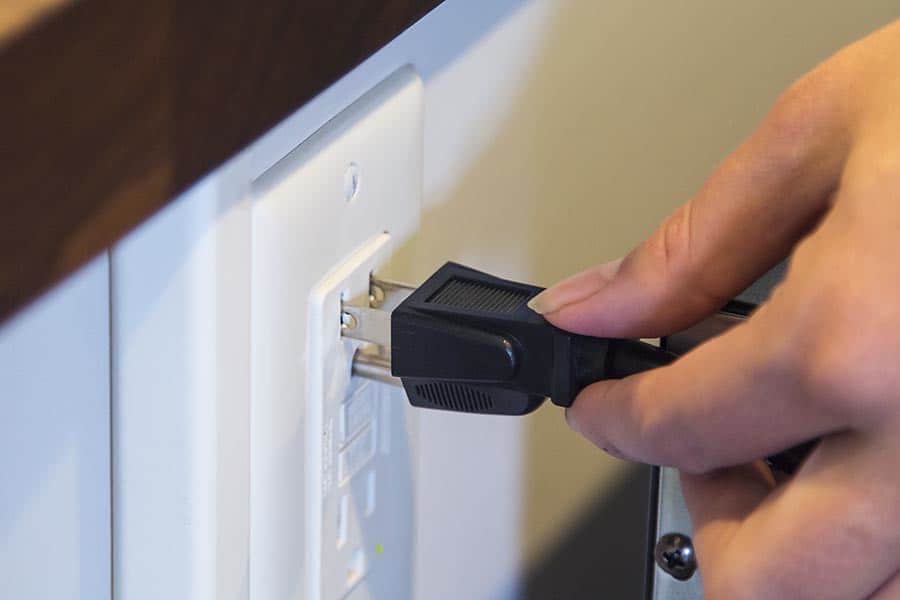Let’s talk shop about how power works in your tiny house. If you’re new to RVing, you’ll need to arm yourself with a little knowledge of how these systems work before you hit the road.
To run RV electronics and appliances that require a lot of power, like your air conditioning unit, understanding ACDC electrical is vital. So let’s roll up those sleeves, and here we go…
Shore power will permit you to effectively manage the amount of electricity you will use while plugged into “the grid”, and is a great option if you plan on running something like an air conditioner, toaster, or any appliance you need to plug into an outlet.
Depending on the size of your motorhome, you may be able to use a maximum of either a 30-amp or 50-amp service.
With an RV outlet adaptor, you will be able to easily convert these services down to a 15/20 amp operation.
The services typically provided in North American RV parks will be one or more of the following three choices:
Choice 1 – 15/20 Amp Duplex
This service will give you 15/20 amps at 120 volts
which equals roughly 1,800 to 2,000 watts of power.
Choice 2 – 30 Amp RV Receptacle
This service will offer 30 amps at 120 volts which
equals about 3,600 watts of power.
Choice 3 – 50 Amp RV receptacle
This service will give you 50 amps at 240 volts or 100 amps at 120 volts and equals roughly 12,000 watts of power.

What Exactly Does This Mean?
Well, considering that the jump from a 30 amp service to a 50 amp service will provide an increase of 333% available power, you will be able to operate more of the things you have stuffed into your motorhome.
However, there are also appliances that you may not always be able to use- such as your A/C, depending on the type of service provided at your chosen RV park or home that you’re plugged into.
The Difference Between AC and DC in Your RV
One more important factor to consider before moving into your motorhome, is the difference between AC and DC power, and how each can impact the way you can use electricity.
The following is a short explanation that will describe the difference between the two form of flow currents.
Alternating Current (AC) and Your RV
When you plug your RV into a power source at an RV park or at your home, you are connecting to AC power.
If you were to look around your home, you would discover that many of your household appliances and devices operate off of AC power: Any appliances that require you to plug them into a wall (phone chargers, microwave, television, laptop, hairdryer, etc.) run off Alternating Current.
The benefit of having AC available via being plugged in- or “shore power”- is that you can use all the aforementioned appliances onboard your rig.
Know that if you’re plugging into shore power at a residential home, the average RV can plug into a 15 or 20 amp residential connection. The same RV would be able to use a 30 or 50 amp connection at an RV park.
Direct Current (DC) and Your RV
The power that is stored in your batteries- provided you are not plugged into shore power and don’t have an inverter- is Direct Current (DC).
DC, on it’s own, will not give you enough power to operate any plug-in devices or appliances like the microwave, phone chargers, or air conditioning; Instead, the amount of DC power stored in your batteries will only be enough to run house lights, possibly a water heater, run your RV furnace, and perhaps your refrigerator.
To operate additional appliances, you do have two options: Adding an inverter to your rig, or use a generator.
An inverter takes DC power and converts it to AC power, allowing you to plug in energy-hungry appliances and use them just as you would in a traditional “Sticks and bricks” home. Generators convert DC to AC power as well, but are larger, louder machines that run outside your RV.
Wrap Up
Having enough power to run appliances in your RV is important, and knowing the two different types available on board is vital.
Remember: Direct Current is the type of energy provided to appliances that are directly connected to your RV like the lights, water heater, and furnace.
Alternating Current is the type of energy provided when an RV is plugged into shore power, has an inverter, or uses a generator. This type of power provides the energy needed for plug-in appliances such as: Phones, microwave, laptops, an air conditioning unit, and blow dryers.
So, before you hit the road, have a good understanding of what your energy needs are, whether or not you’ll need- and have an opportunity to- plug into shore power while travelling. Having enough energy to power up your life on the road will make your journey much more enjoyable!
Happy travels!

